No More Cheap Solar Panels from China?
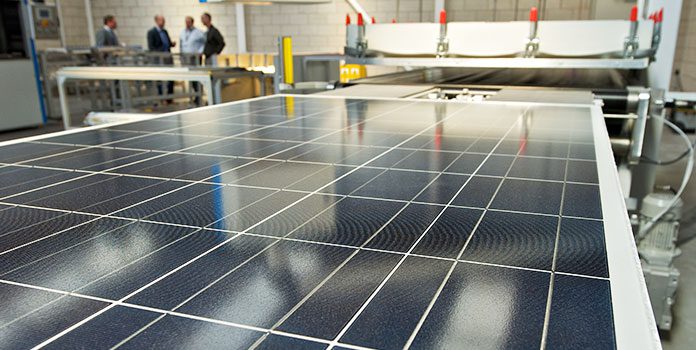
China’s cheap solar panels facilitated the global solar boom, but everything must come to an end.
We all know already that China has for decades beaten the rest of the world’s manufacturers hands down in super-efficient manufacturing ability. They’re able to bring prices down so much that they not only produce the world’s cheapest solar panels, but the world’s cheapest everything – from plastic swords to steel scaffolding to garbage cans.
If you got a great deal on a solar system on your roof, there’s an extremely good chance that the panels were made in China. That’s because seven of the top ten panel makers in the world are located in China, churning out high quality, discount solar panels for all the rest of the world.
Maybe you are indifferent to the upside of cheap scaffolding, and garbage cans, and plastic swords, but China’s genius in manufacturing has also been a tremendous boon for those of us who love solar; because China’s amazing proficiency in manufacturing has led to the rapid drop in solar prices that have done so much to enable so many of us to go solar over these first years of the solar revolution.
In the US, for example, the majority of the cost to go solar is now all the rest of the installer’s costs other than the actual solar panels themselves. Think about that. The brains of the system, the actual science, or some might even call it the near-magic miracle that is photovoltaic electricity, is now the cheapest aspect of the solar system on your roof. Thanks to China.
But all that might be about to change.
We might no longer be able to rely on China’s amazing propensity for efficient manufacturing that boosted it to undisputed world leader in solar manufacturing.
Financial Trouble for China’s Solar Manufacturing Industry
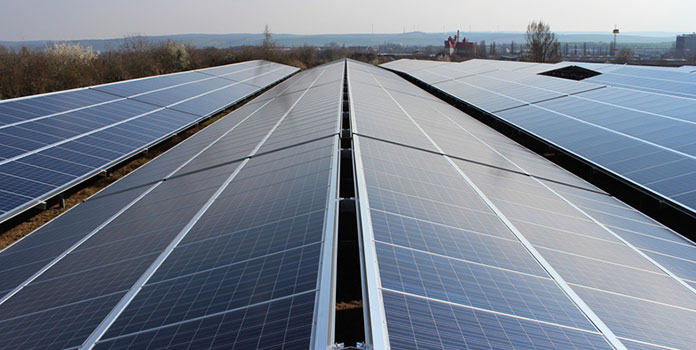
That’s because the free ride for global solar consumers, thanks to China’s cheap solar may be coming to an end. As a result of the turmoil in China’s stock market, some of the world’s mightiest solar panel makers might be among the casualties.
“Solar is heading down a path of profitless prosperity,” Sivaram told ClimateNews Network.
Following the very high-profile bankruptcy of SunTech in 2014, it was clear that China’s thin-film conglomerate Hanergy was also on the ropes, after buying up a handful of thin-film firms in the US over the last four years.
In an extraordinary moment for global finance, in September, the Shanghai stock exchange fell 8.5% on what even Chinese media described as “Black Monday”, in the biggest drop since the very early days of the global financial crisis. Then the next day, it dropped another 7.6%, creating panic in US and EU financial markets.
More recently, in May of 2016, Bloomberg warned that the Chinese solar manufacturing giant Yingli may also be about to follow the former Chinese solar panel superstar SunTech into bankruptcy, after warning that it would be very difficult to repay $216 million that came due in May:
“Yingli declined 21 percent to $3.60 at the close in New York, the most since Sept. 29. That followed an 8.1 percent drop Friday after the Chinese solar company acknowledged ‘substantial doubt as to its ability to continue as a going concern.”
EU and US solar manufacturers fought competition from cheap solar panels from China. Retaliation by competing solar manufacturing nations already dogged China’s solar industry. Even before the recent Chinese stock market turmoil, solar panel manufacturers in Europe and America were filing lawsuits against China for making and selling their solar panels so cheaply.
These potential competitors demanded that tariffs be placed on Chinese solar panel imports into the US and the EU, so that locally manufactured solar might become better able to compete with China’s much cheaper imports.
This concerted legal battle by the rest of the solar industry had already slowed Chinese exports so much that many of these leading solar manufacturers were already in trouble, even before all the stock market woes.
The biggest Chinese solar manufacturer, Suntech, went bankrupt partly as a result of global protection against cheap solar panels that China was able to “dump” on the world market.
Yingli, another global leader (and the manufacturer of the solar panels we put on our own roof in 2010) even halted production at some of their plants back in 2016 because of the resulting drop in demand. And Hanergy, a third major Chinese panel maker had already lost half its stock market share price.
As China’s solar panel makers have tried to cope with the profitability problems caused by too much production, a lot of debt and their razor-thin profit margins, the result has been almost akin to a global liquidation sale.
As China’s solar panel makers have tried to cope with the profitability problems caused by too much production, a lot of debt and their razor-thin profit margins, the result has been almost akin to a global liquidation sale.
According to figures at Bloomberg New Energy Finance, supply exceeded demand at one point by between six and ten gigawatts. The report found that globally, 38 gigawatts (GW) of solar modules were manufactured in 2012. But demand the next year was for only 28 to 32 GW.
“I think you’re going to see just the overall capacity decrease because you’ll have some tier three and four folks – that were never going to be competitive – closing up, getting out of business, and consolidation among the tier one and tier two companies,” said John Smirnow in 2014 when he was VP of Trade and Competitiveness at the Solar Energy Industries Association (SEIA).
“There were many years where just a whole bunch of companies would sprout up overnight. There could be lot of inefficient capacity in China that has closed or is in the process of closing.“ Smirnow continues “This is a highly-competitive, rapidly growing global manufacturing industry… The smartest and most innovative solar companies are rising to the top. So that’s going to happen, as a sort of natural progression.”
Chinese solar panel manufacturers are still fast-liquidating inventory. Many of the smaller manufacturers are simply closing shop and dumping inventory for whatever price to get it out the door.
Temporarily, this means that for a year or two, till the current “glut” is absorbed, prices will be super low – but not for long.
In 2008, China sold its panels for $4.50 a watt. Now they are just 60 cents. But a drop of this magnitude is actually not sustainable; no company in any industry can recoup manufacturing costs or keep investing in research to improve efficiency when their prices drop so fast so far. Unfortunately, an unrealistic expectation that solar prices can and will drop so fast has led to a pushing of the envelope far beyond what any industry could sustain.
Trump Institutes Tariffs on Chinese Panels
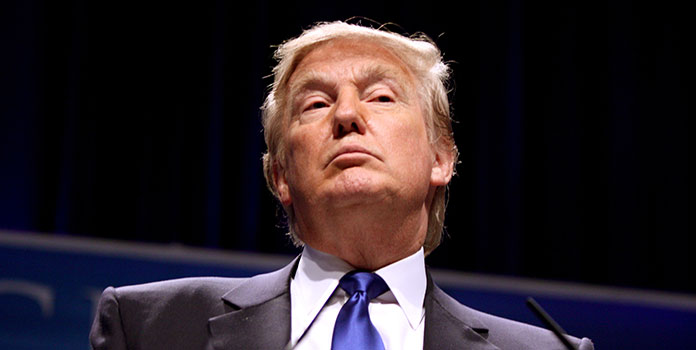
As mentioned, because of this manufacturing glut and the ensuing low prices, solar panel manufacturers in the US claim they simply can’t compete with Chinese products, thereby creating an unfair market.
After several US-based manufacturers requested a tariff on incoming solar panels to the US, Trump finally agreed in early 2018, imposing a 4 year, 30% tax on Chinese panels that decreases to 15% over time, with a small amount of imported solar cells exempt from the tax at the beginning of each year.
While many were fearing something far worse (the US International Trade Commission recommended a 35% tariff), his decision caused widespread disdain among media and the solar industry. Forbes noted:
“President Trump tried to strike a balance between punishing China for importing low-cost solar panels and modules into the U.S. and trying to protect the domestic solar industry from massive job losses. Unfortunately, the middle-of-the-road approach may have the exact opposite impacts.”
The Solar Energy Industries Association (SEIA) estimates that the tariff will cause a loss of 23,000 jobs in the US solar industry. While the residential solar industry will certainly be affected, the main brunt will be born by the solar companies that focus on large-scale, utility-sized installations, where the cost of the actual solar panels make up a much larger share of total installation costs.
In 2017, the National Renewable Energy Lab found that, on average, solar panels accounted for 12.5% of the total installation cost for residential systems, mostly thanks to the high cost of sales and customer acquisition residential installers see. Commercial installations, on the other hand, don’t suffer from those high acquisition costs, so solar panels make up a much larger share of the total installation – about 20% for a 1 MW system, according to the same NREL report above.
This makes a tariff on solar panels less distressing (though still alarming) for residential installers, but a huge blow to large commercial installers.
What Does This Mean for Those About to Go Solar?
How this trade war will affect people planning to go solar has an upside and a downside. Because of this price war, the cost to go solar certainly has dropped radically in the last few years.
But today’s super low prices are likely at their very lowest point. Between the last five years of China’s aggressive panel dumping, its mass liquidation sale in response to financial difficulties caused by too-aggressive competition, and tariff wars that have put more marginal producers out of business, solar panels are probably as cheap as they ever can be.
But China’s generosity has led the world to a dangerous place:
Once that inventory of cheap solar panels is used up, prices will once more rise, because so few survivors will be left standing in China’s solar manufacturing industry.
Once that inventory of cheap solar panels is used up, prices will once more rise, because so few survivors will be left standing in China’s solar manufacturing industry.
These survivors will have to have a very different profile to attract investors. They will have had to convince their potential investors that they wouldn’t be throwing good money after bad if they make an investment in this firm.
To look like viable solar manufacturing businesses, their prices will have to be high enough to placate growing concern. But today’s Chinese solar manufacturers have set prices at rock bottom to grease the skids for speeding ever more panels out of warehouses as fast as possible at today’s liquidation pricing.
And when the stock market sent shockwaves through China, its solar panel manufacturers – already stretched to the limit by both the tariff wars and now by the race to the bottom – are facing the end of the line.
What’s the end result of all this? Vast numbers of smaller Chinese solar panel manufacturers could go out of business.
As a result, it is inevitable that solar prices will rise again; bad news for consumers, while reassuring to the overall health of the solar industry going ahead.
As a result, it is inevitable that solar prices will rise again; bad news for consumers, while reassuring to the overall health of the solar industry going ahead.
In the US, the 30% federal tax credit (also known as the Investment Tax Credit, or ITC) has been a boon to homeowners because it effectively provides a discount of one-third off the installed price of a solar system.
Whether US homeowners buy their solar systems outright and get the 30% discount themselves, or whether they lease from “third-party owners” who use the 30% tax credit in order to offer month-to-month payments on solar power that is cheaper than the utility in most states, the ITC has helped solar get a toehold in the nation’s energy system.
Although long the target of the fossil energy industry and set to sunset beginning in 2019, thanks to a near-miraculous move by congress at the end of 2015 in which they extended the ITC.
Democrats had a bargaining chip they didn’t mind cashing. The Republicans wanted to be allowed to export oil and gas to a hungry world market. The Democrats see fossil exports as potentially making renewables even more attractive to utilities at home, as fossil prices rise to market levels. As a result, extending the ITC proved to be a win win for both sides.
Sadly, the demise of China could have the effect of negating much of the good from this ITC extension, though there is a ray of hope.
China Consumes Its Own Manufacturing Glut of Cheap Solar Panels
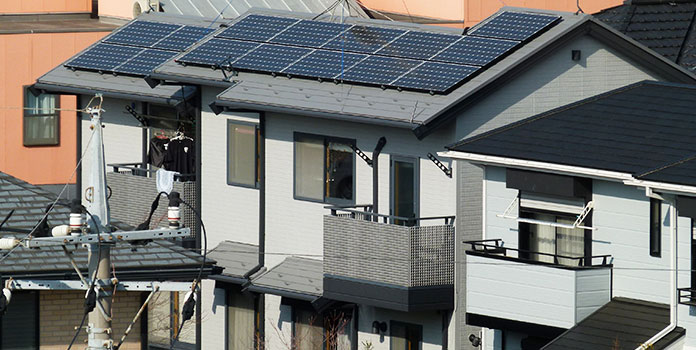
One ray of hope for global solar buyers – and for the world’s climate troubles? China itself has consumed vast stocks of their own solar panels by creating a gigantic new domestic solar market within China itself.
Rather than depend on other nations to buy enough of its huge production of solar panels, Chinese policymakers have come up with an excellent solution to the manufacturing exuberance that led it to world leadership in solar manufacturing.
A truly massive increase in domestic solar deployment saw China go from a nation with virtually no solar installed in 2011 to 43 GW in 2016 – just 5 years later, so now China leads the world in installed capacity.
“When China puts their mind to doing something, they usually do it,” Smirnow said. “If China’s committed to reaching that goal, they’re sure going to. They are going to consume a considerable amount of solar over the next couple of years. I don’t think there’s any doubt about that.”
Beijing released new plans to install up to 20 GW a year till 2020 for a 143 GW goal by then, tripling its current solar capacity. With execution that equals the efficiency of its manufacturing, China installed more than a quarter of that target – 7 GW – in just the first quarter of 2016. In fact, just look at the 10 biggest panel manufacturers of 2017. In the US, we aren’t family with many of the companies, like JA Solar and Longi Lerri, as they are Chinese companies focusing on their own domestic market.
Will China’s Solar Manufacturing Expertise Impact Climate Change?
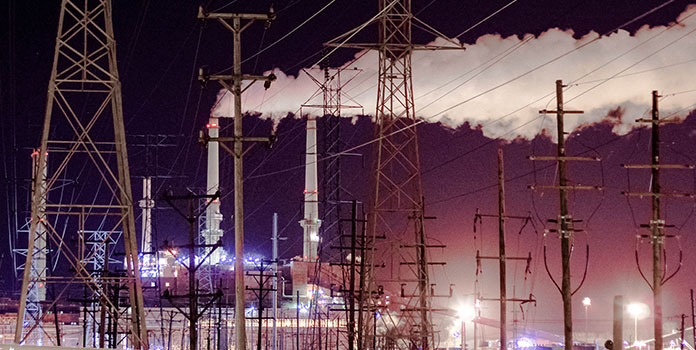
Basically, China’s amazing ability to mass-produce cheap solar panels has been helping the world make the switch to clean energy, which is the most effective way to end climate change. Leveraging their innate manufacturing proficiency, Chinese manufacturers made a dent in solving the world’s global climate problems.
Now if policymakers can enable domestic absorption of its own vast glut of solar panels, enabling its solar industry to scramble back to its feet, two birds one stone. The world’s solar panel supply is safe, climate change averted.
My two cents? I think China deserves a medal, not the world’s lawyers and and certain government officials on their case.
